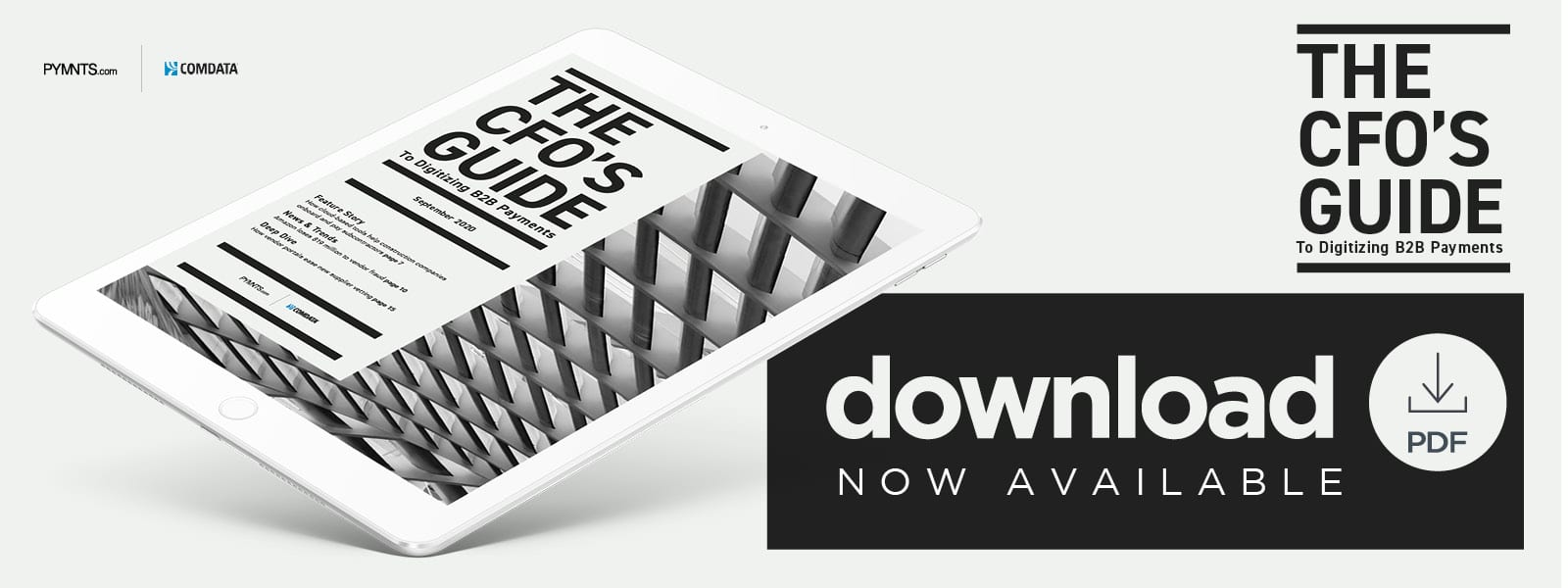How Digital Subcontractor Onboarding And Payments Tools Build Better Relationships

Construction companies often rely on material and equipment suppliers to complete projects, but manual, paper-based invoicing can make paying subcontractors a struggle. In the CFO’s Guide To Digitizing B2B Payments, Anna Bickford of commercial-building contractor DPR Construction explains how switching to cloud-based systems can take the pain out of processing invoices and speed up supplier payments.
The COVID-19 pandemic is spurring new design priorities for building construction, with architects now viewing once-popular open office layouts as recipes for health risks. Even the American Institute of Architects (AIA) has released new guidelines for revamping shared workspaces. Retooling these properties for safe use could require anything from minor installation projects to serious renovation overhauls, with designers calling for separate building entrances and exits, physically divided office spaces, wide one-direction hallways and more.
Property owners who review these recommendations may be tempted to put construction companies on speed dial, and ensuring that these kinds of projects move smoothly from beginning to end requires the ability to move payments rapidly all the way down the chain. General contractors often rely on subcontractors to help them complete projects quickly, and must be able to pay these partners swiftly and easily.
Frictionless subcontractor compensation has not always been the norm in the construction industry, with a 2019 subcontractor survey finding that nearly half of respondents waited up to 90 days to get paid. The pandemic-induced economic downturn only made slow compensation more inconvenient, with subcontractors less able to endure the financial strain of slow payments. General contractors making the switch to remote work may also find it more difficult to receive and manage paper invoices and to issue paper checks.
Shifting from manual systems to cloud-based payments and subcontractor management systems can sand away these frictions, according to Anna Bickford, an audit team member for commercial building contractor DPR Construction. These tools can make it easy to accept and process subcontractor documents as well as issue quick digital payments, Bickford told PYMNTS in a recent interview. She expected the pandemic would add pressure to accelerate general contractors’ adoption of digital tools.
“I think more folks are going to continue to get on board if they aren’t already,” Bickford predicted.
Subcontractor Onboarding
DPR used to rely on paper-based methods for onboarding and paying material and equipment suppliers, service providers and other subcontractors. These processes could get complicated, however, as the company’s subcontractors must submit a variety of billing-related documents, such as invoices and unconditional lien waivers. This meant that a lot of papers were flying around before DPR switched to a digital system several years ago, according to Bickford.
DPR’s digital tools helped the company better streamline operations during the pandemic and enabled the company to improve the accuracy of its enrollment and payments processes, Bickford explained.
“As far as onboarding, in previous iterations, it was just a lot more upfront paperwork … having [to make sure the] the subcontractors understand our process and ensure that they’re billing according to their schedule of values, and even that there weren’t miscalculations in the Excel spreadsheets — all of that goes away [with a cloud system],” she said.
DPR processed $4 billion worth of subcontractor payments last year, according to Bickford. Facilitating this high volume of transactions while still using manual document collection and payment issuing processes could have been cumbersome.
Payments And Tracking
Onboarding subcontractors into the digital system has helped support the company’s pivot to issuing electronic payments via ACH instead of paper checks. This spares subcontractors from waiting for postal mail and improves business relationships. Cloud-based systems can speed up transactions in other ways as well, supporting clearer invoice and payments status tracking. Tools like these provide accounts payable (AP) departments and subcontractors with real-time insights into invoices’ processing statuses and any factors that could prevent a transaction from clearing promptly.
“When we are using the paper process, we lose that transparency and folks don’t necessarily know what’s holding [up] their payment unless they reach out and ask. Today, everything is available electronically,” Bickford said. “[A system] that provides invoicing and payments status in real time for our sub[contractors] supports that transparency and innovation in an area that was previously cloaked in mystery [during] the days of … hard-copy invoices and … paper checks.”
This real-time data availability can help subcontractors quickly discover if there is any missing documentation that they need to provide to enable their payments to be released, saving time for both parties.
The construction industry may soon be called upon to create convenient, safe workplaces with pandemic-sensitive designs, and ensuring that payments can flow smoothly to all parties involved could be key to keeping these projects on schedule and getting workers back to the office. Cloud-based digital tools for onboarding and paying subcontractors could offer the construction space the boost it needs to build better transaction flows.

